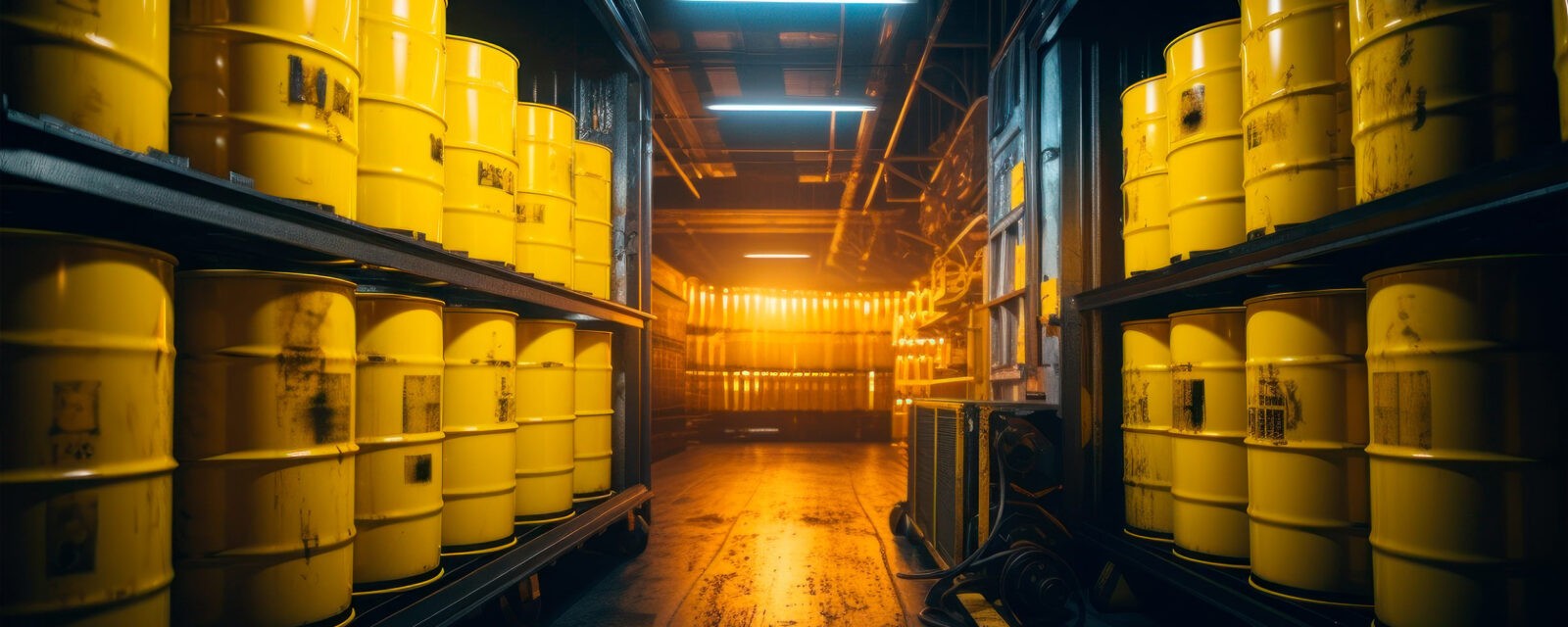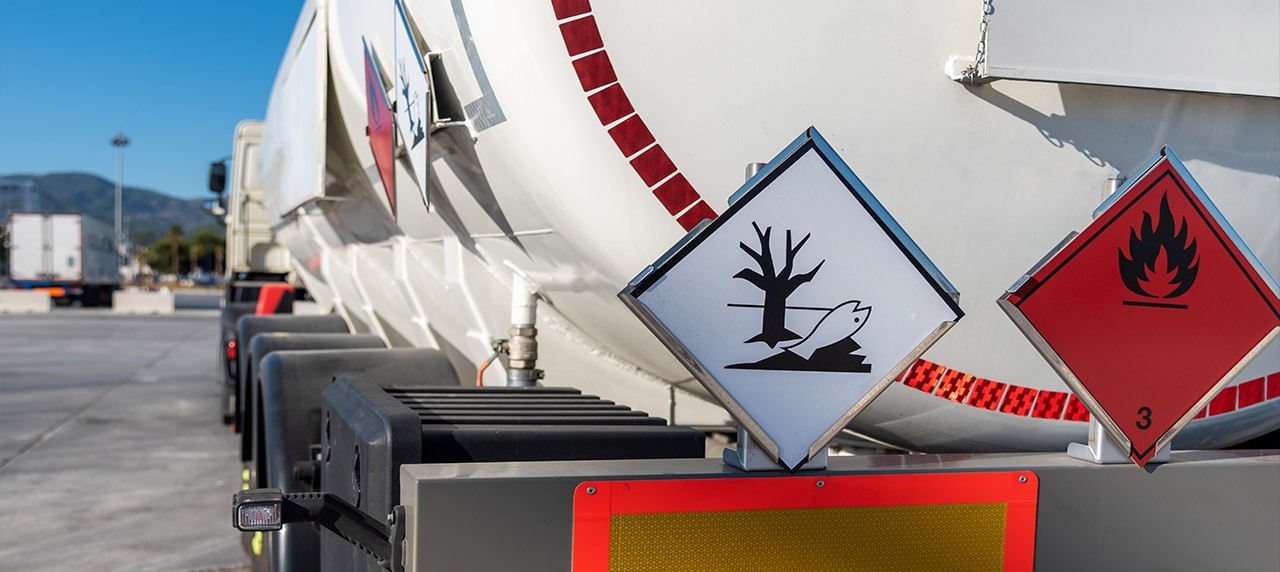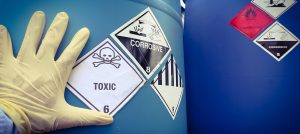
What is Hazmat Shipping?
HAZMAT shipping refers to transporting hazardous materials, necessitating specialized shipping and handling procedures to mitigate potential risks. These materials encompass solids, liquids, and gasses that could harm individuals if improperly stored or packaged. Both federal regulations and carrier-specific requirements govern the classification of HAZMAT goods, ensuring safe and compliant transportation.
International shipping of dangerous goods requires careful management and adherence to strict safety protocols. This aspect might not be relevant for some merchants, but for others, such as cosmetics brands dealing with dangerous substances, it becomes crucial to tailor their shipping strategies accordingly.
The transportation of dangerous goods demands specialized knowledge and compliance with regulations to minimize risks during transit. This article delves into HAZMAT shipping intricacies for safe transport and provides insights into the essential steps and regulations involved in safely shipping dangerous goods across borders.
Hazmat Shipping Regulations

Knowing the various sets of hazardous materials regulations is crucial when shipping dangerous substances. These regulations provide guidelines for safe transportation and handling. Here are the key ones to consider:
- U.S. Department of Transportation (DoT) Title 49
Title 49 of the code of federal regulations governs the transportation of hazardous materials within the country, encompassing vital aspects like handling, shipping, and labeling protocols
- IMDG (International Maritime Dangerous Goods Code) Code
The IMDG Code regulates the safe shipping of hazardous goods by sea for international transportation. It protects crew members and the marine environment from potentially harmful substances - ICAO / IATA
The ICAO is a UN agency responsible for international civil aviation that establishes standards for the international air transport of dangerous goods. IATA, a non-governmental organization, that includes HAZMAT transportation via commercial airlines, covers private-sector norms
Which Items Are Classified as Hazmat?
These materials are classified into nine different classes based on their danger level. Each class has distinct properties and characteristics, leading to varying regulations for shipping, packaging, labeling, and handling.
Class 1: Explosives
Class 1 includes materials with a high likelihood of exploding. Examples include fireworks, dynamite, and ammunition.
Class 2: Gases
Class 2 includes gasses that are compressed and stored for transportation. Examples include oxygen, aerosols, carbon dioxide, natural gas canisters, and lighters.
Class 3: Combustible liquids and Flammable liquids
They can ignite and cause fire. These substances require specific packaging and labeling to ensure safe transportation. Among these substances are acetone, paints, adhesives, gasoline, ethanol, perfume, and vanish.
Class 4: Flammable Solids
Materials of Class 4 will ignite if they come into touch with a flame. Examples include sulfur, matches, sodium batteries, and magnesium.
Class 5: Oxidizer and Organic Peroxides
Class 5 involves substances that act as oxidizers, causing combustion in the presence of oxygen or organic peroxides that are chemically unstable and produce flammable vapors. Examples include potassium permanganate, hydrogen peroxide, ammonium nitrate fertilizer, sodium nitrite, and oxygen generators.
Class 6: Toxic and Poison Substances
Materials in Class 6 are those that are known to result in severe harm or death when ingested, breathed, or exposed to the skin. Examples include methyl bromide, forensic materials, biological products, and tear gas.
Class 7: Radioactive Materials
Class 7 involves materials that emit radiation at levels higher than 0.002 microcuries per gram. Examples include radioactive ores, medical isotopes, depleted or enriched uranium, and X-ray machines.
Class 8: Corrosive Substances
Class 8 includes substances that cause damage to human skin or corrode steel or aluminum rapidly. Examples include sodium hydroxide, batteries and battery fluid, sulfuric acid, drain cleaners, and paint strippers.
Class 9: Miscellaneous
Class 9 encompasses materials that do not fit into the classifications of Classes 1 through 8. Examples include lithium batteries, vehicles, first-aid kits, and dry ice.
Why is It Important to Choose an Experienced Company to Ship Hazmat?
Hazardous materials require special care during shipping. This involves more than just a truck and driver; it needs experts who understand the regulations and have the specialized equipment to safely handle these potentially dangerous substances. That’s why choosing an experienced shipping company is crucial for peace of mind.
What Issues Can You Face if You Ship Hazardous Goods Incorrectly?
The stakes are high when shipping such materials. Any error, no matter how small, can trigger explosions, fires, or toxic releases. These accidents can lead to injuries, property damage, and even cost lives. That’s why extreme care is essential in every step of the process.
Hazmat Shipping Manual

Identifying Hazardous Goods for Shipping
The first step l is to confirm whether the shipped product is classified as hazardous and determine its specific class. This determination influences various aspects, such as the required packaging and the mode of transportation, whether by air or ground.
To accomplish this, consulting the Material Safety Data Sheet (MSDS) is essential, as it contains vital information mandated by law for all materials or substances. The MSDS provides details like the Proper Shipping Name, Hazard Class, and UN Identification Number, along with packaging and labeling requirements, ensuring safe and compliant shipping practices.
Obtain HAZMAT Shipping Certification
Companies must obtain a specific certification mandated by the Department of Transportation (DOT) for HAZMAT shipping. This certification entails proper training in classifying, packaging, marking, and labeling dangerous goods for shipment. Failure to comply can lead to severe fines. “HAZMAT employees” are individuals involved in the following:
- Handling
- Preparing for transportation
- Operating vehicles used for transport
- Designing, manufacturing, inspecting, marking, reconditioning
- Maintaining/repairing, or testing packaging
One can avoid this time-consuming process by outsourcing dangerous goods shipping to an experienced transportation company.
Identify Appropriate Packaging for HAZMAT Shipping
The packaging requirements vary based on materials’ hazard class and quantity. Title 49 categorizes packaging into three “packing groups”:
- Packing Group I for great danger
- Packing Group II for medium danger
- Packing Group III for minor danger

Proper Labeling and Marking for HAZMAT Packages
Mark and label packages correctly to ensure safe handling, including package orientation and protection from heat.
Creating the Shipper’s Declaration for HAZMAT Shipping
Essential shipping documents for both Ground and Air shipments include:
- The UN identification number
- Proper shipping name
- Packing group
- Hazard class
- Quantity
- Type of packages
- Shipper’s certification
- Emergency response information
- Any additional required details
Atlantic Project Cargo has an extensive global network and partnerships with leading carriers to provide customized, fast, and cost-effective solutions for HAZMAT shipping. Our experienced team ensures complete regulatory compliance, proper handling, and documentation preparation, prioritizing safety and efficiency throughout the transportation process. Trust Atlantic Project Cargo for the secure and efficient movement of hazardous materials.
Read More



